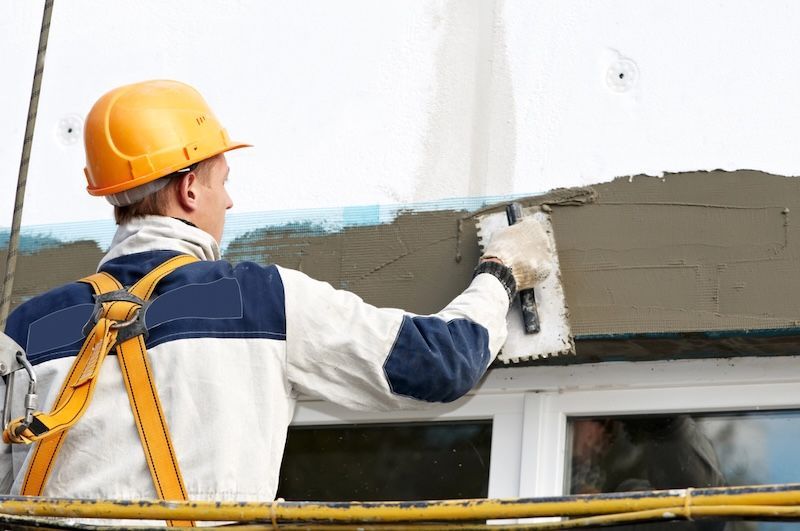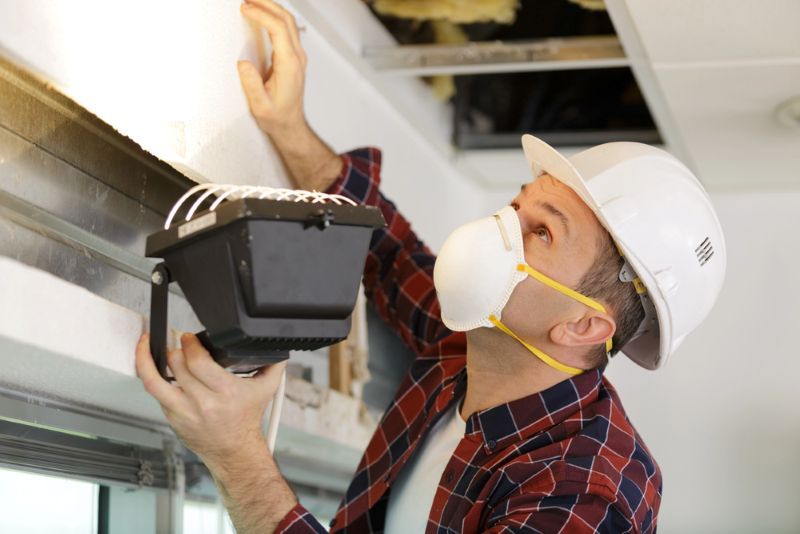Why Stucco Waterproofing Is Crucial Before Painting
Many homeowners eager to refresh their exterior walls assume that painting is the final, simple step. It feels like the fastest way to give a home a clean, updated look. But here’s the catch: if you skip waterproofing your stucco first, you could be setting yourself up for bigger problems down the road.
Moisture that seeps into unsealed stucco can cause paint to bubble, peel, and crack. Worse, it can lead to hidden mold growth and even serious structural damage over time. What looks like a small cosmetic issue can quickly turn into costly repairs behind the scenes.
That’s why stucco waterproofing isn’t just a nice-to-have—it’s a necessary step for protecting your walls, preserving your investment, and ensuring that any new paint job lasts. Before you pick up that paint sprayer, it’s essential to understand the crucial role waterproofing plays in maintaining your home's beauty and structural integrity.
What Happens If You Paint Without Stucco Waterproofing?
Skipping stucco waterproofing before painting exterior walls can lead to water vapor getting trapped inside the structure. Stucco, while durable, is naturally porous. Without a proper stucco sealer or waterproofing layer, moisture can penetrate the surface. In high humidity areas, this trapped moisture can compromise both the paint and the walls.
When water sits inside exterior stucco, the paint begins to blister, peel, and fade. It also creates weak points in the stucco wall, allowing cracks to form over time. Water can infiltrate masonry, wood, or even brick sections connected to the stucco surfaces. By waterproofing stucco first, homeowners add an additional shield that protects both the surface and the layers underneath, maintaining the structure's integrity.
Why Waterproofing Stucco Is the First Step Before Painting

Before adding a fresh coat of paint, it’s crucial to waterproof your stucco. Sealing the surface first helps block moisture from penetrating the walls, preventing serious damage over time. Proper waterproofing lays the foundation for a longer-lasting, more durable paint finish—especially in areas prone to rain and humidity.
Protects Against Moisture Damage
Waterproofing stucco creates a weather resistant barrier that stops moisture from reaching the interior walls. Applying paint without first sealing the surface invites moisture to seep in, especially around doors, windows, and areas where caulking might fail. Trapped moisture can quickly lead to problems with vapor movement and surface damage.
A quality stucco sealer ensures that water vapor escapes outward without allowing new moisture inside. This protection is especially critical in regions with high humidity, heavy rains, or fluctuating temperatures.
Increases Paint Durability
When stucco surfaces are properly sealed, the paint coat adheres better and lasts longer. Elastomeric paint, often recommended for exterior applications, performs best over a properly waterproofed surface. Without waterproofing, more paint is needed to cover the wall, and even then, the paint may not bond properly.
By sealing the surface first, homeowners use less paint and achieve better coverage. The result is a finish that resists cracking, peeling, and discoloration over time. Waterproofing stucco protects not only the exterior but also extends the lifespan of the entire wall system.
Key Steps for Successful Stucco Waterproofing
Waterproofing stucco the right way starts with careful preparation. Inspecting and repairing the surface before sealing is crucial for long-term protection. Small cracks, gaps, and imperfections can let moisture seep in if left untreated, so fixing them first helps create a stronger, more reliable waterproof barrier.
Inspect and Repair the Surface
Before applying a stucco sealer, inspect the stucco wall for cracks, holes, or gaps. Use mortar or an appropriate patching material to fill in any imperfections. Pay special attention to areas around doors, windows, and where screws or anchors may have been inserted. Addressing small gaps in the surface ensures a tighter barrier against moisture.
Choose the Right Sealer
Selecting a breathable waterproofing stucco sealer is crucial. A good sealer allows vapor to escape but prevents water intrusion. Steer clear of sealers that completely block vapor movement, as this can lead to trapped moisture problems later.
Choosing the right sealer can make the difference between a durable surface and one prone to early failure. For homeowners unsure which material suits their exterior stucco best, consulting a professional can ensure the correct solution is applied.
Apply the Sealer Properly
Use a paint sprayer or roller to apply the sealer evenly across the stucco surfaces. Two coats are usually recommended for full protection. Each coat must dry completely to form a consistent barrier. The layers of sealer create a strong defense against external moisture while allowing internal vapor to escape naturally.
Paint After Waterproofing
Once waterproofing is complete, applying elastomeric paint provides an additional shield against weather extremes. Use the correct technique when applying paint to prevent issues with adhesion. Always ensure the stucco is completely dry before beginning the painting process to promote proper bonding and prevent peeling.
Following these steps carefully helps build a barrier that protects against moisture, enhances the structure's durability, and maintains the beauty of exterior walls for years.
Common Mistakes to Avoid When Waterproofing Stucco
Waterproofing stucco may seem straightforward, but small mistakes can lead to big problems down the line. Skipping key steps, using the wrong materials, or rushing the process can weaken your wall’s defense against moisture. Knowing what to avoid will help you achieve a stronger, longer-lasting waterproof finish.
- Skipping the inspection step and sealing over cracks or gaps
- Applying paint before the surface is completely dry
- Using the wrong type of sealer that traps vapor instead of allowing it to escape
- Ignoring critical spots around the roof, doors, and windows
- Applying too thin a coat of sealer, reducing the barrier's effectiveness
Other frequent mistakes include failing to address holes left by screws, improperly mixing mortar for patching, and using substandard materials that reduce durability. Every layer added must contribute to a stronger barrier.
Avoiding these errors ensures that the stucco wall remains well-sealed, the exterior stays beautiful, and the overall structure resists damage caused by moisture intrusion.
Protect Your Stucco with Proper Waterproofing
Waterproofing stucco before painting is a critical step you don't want to overlook. It creates a strong barrier against moisture, protects the structure underneath, and helps the paint last longer without peeling, bubbling, or cracking. Skipping this step often leads to costly repairs down the line, while properly sealed surfaces stay beautiful and durable for years.
A successful project starts with a careful inspection, the right choice of sealer, and a thorough application that covers every vulnerable area. Homeowners who waterproof before painting enjoy better performance, less maintenance, and stronger protection against weather damage.
When you’re ready to safeguard your stucco the right way, trust the professionals at Orlando Stucco Repair Pros. Contact us today for expert waterproofing and painting solutions that keep your home looking its best.
Frequently Asked Questions
Can I paint stucco without waterproofing it first?
You can, but it's not recommended. Without waterproofing, moisture can get trapped inside the stucco, leading to peeling paint, mold growth, and long-term structural damage.
How does waterproofing protect stucco before painting?
Waterproofing creates a breathable barrier that blocks moisture from getting in while allowing trapped water vapor to escape. This helps prevent damage and extends the life of your paint job.
What happens if moisture gets trapped behind painted stucco?
Trapped moisture can cause serious problems, including bubbling or peeling paint, mold growth inside the walls, and even cracks or weakening of the stucco structure over time.
How soon can I paint after waterproofing stucco?
You’ll need to let the waterproofing sealer fully cure first, which typically takes 24 to 48 hours depending on the product and weather conditions. Always check the manufacturer's instructions.
Is stucco waterproofing necessary in dry climates?
Yes. Even in dry areas, occasional rain, humidity, or irrigation systems can introduce moisture. Waterproofing provides extra protection against unexpected weather changes and keeps your stucco in top shape.


